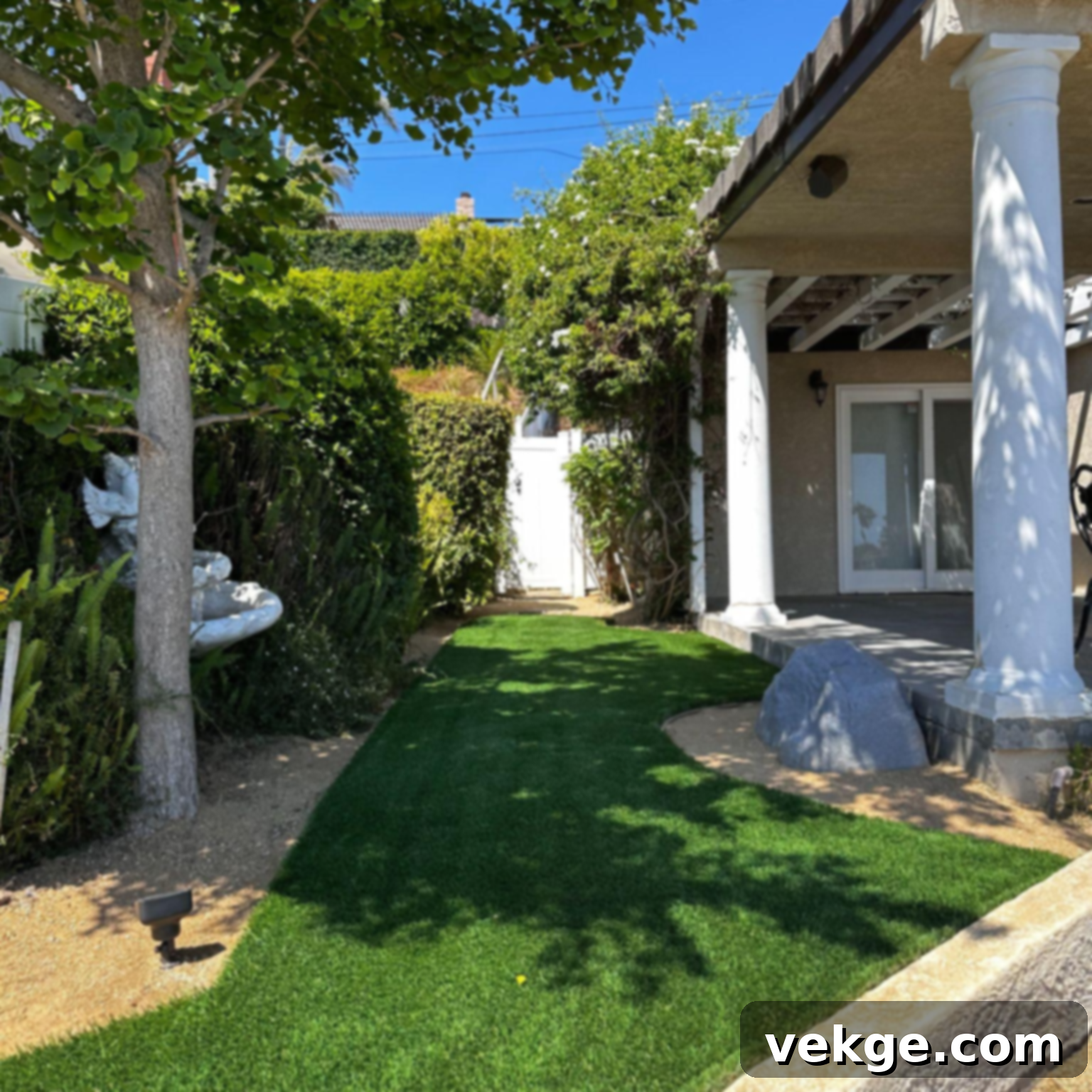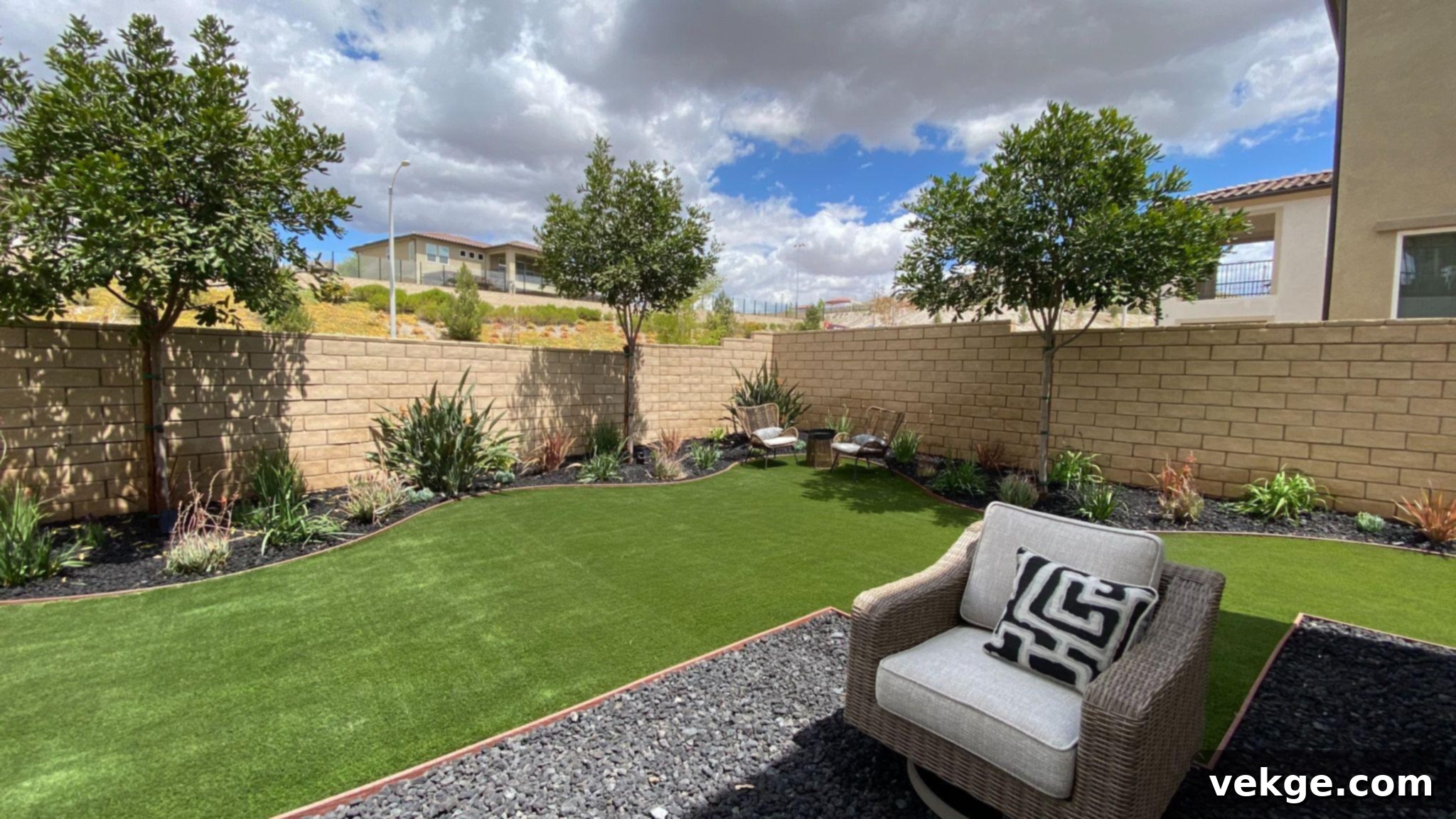Debunking Common Artificial Turf Myths: Separating Fact from Fiction for a Greener Landscape
Imagine stepping into your backyard, only to be greeted by soggy ground and patchy, struggling grass each morning. You yearn for a consistently lush, vibrant green landscape, yet the thought of costly and ineffective upgrades leaves you feeling hesitant. This is where artificial turf shines as a remarkably reliable and increasingly popular solution. Its market growth speaks volumes, with data projecting the artificial grass market size to reach a staggering USD 9,973.6 million by 2030, indicating a strong trend towards synthetic lawns.
Despite this rising popularity, persistent rumors often sow doubt among potential homeowners. Concerns about turf becoming excessively hot under the sun or the initial installation costs being prohibitively expensive often make people question whether artificial turf is truly worth the investment. Many recount anecdotal stories of synthetic lawns gone wrong, leading them to wonder if the perceived trade-offs might outweigh the numerous promises of a perfect yard.
It’s time to put these lingering doubts to rest and address these common misconceptions with clear, evidence-based facts. By understanding the truth about modern artificial turf’s appearance, durability, safety, and long-term costs, you can make an informed decision for your property with genuine confidence, rather than being swayed by outdated hearsay or unfounded fears. Let’s explore the reality behind the myths.
Top Myths About Artificial Turf Busted by Experts

1. Unreal Turf Appearance: Does Artificial Grass Look Fake?
Myth: Many people assume synthetic grass is a glaring imposter in any landscape. They picture uniform, plastic-looking blades with an unnatural shine that immediately betrays its artificial nature. This common worry leads property owners to envision an artificial yard that feels more like a stage set than a genuine, inviting outdoor oasis.
Fact: Modern artificial turf technology has advanced dramatically. Today, state-of-the-art turf manufacturers employ sophisticated techniques to create incredibly realistic synthetic grass. They weave varied blade profiles, incorporating subtle color shifts and thatch layers that expertly mirror the irregular, natural beauty of real sod. Proprietary fiber texturing techniques add microscopic striations, ensuring each strand catches light differently, just like natural grass. During installation, specialists often blend infill granules in earthy tones, further softening contrasts and creating a visually authentic tapestry that moves naturally underfoot and in the breeze, making it virtually indistinguishable from a perfectly manicured natural lawn.
2. Excessive Heat Retention: Does Artificial Turf Get Too Hot?
Myth: A frequently circulated rumor suggests that placing artificial turf under bright sun transforms its surface into a blistering hot field, making warm days unbearable for outdoor activities. This alarming story often deters people from even considering synthetic options for their homes or commercial properties.
Fact: Contemporary artificial turf designs significantly mitigate heat retention. New turf systems integrate advanced, UV-stable fibers that are engineered to reflect, rather than trap, solar rays. This innovative technology helps keep the surface warmth well within comfortable limits, even on sunny days. Furthermore, beneath the grass, breathable base layers are specifically designed to channel airflow and moisture away, effectively preventing heat buildup within the system. Independent field studies conducted in various sports venues and residential settings consistently report that properly installed artificial turf systems remain pleasantly temperate, ensuring a comfortable surface for play and relaxation, even during prolonged sun exposure.
3. Environmental Risks of Artificial Grass: Is Synthetic Turf Bad for the Planet?
Myth: Critics frequently argue that synthetic lawns leach harmful chemicals into the soil, block natural soil hydration, and ultimately end up in landfills when they wear out, creating long-term ecological damage and contributing to pollution.
Fact: Leading artificial turf producers are highly committed to sustainability and environmental responsibility. They now craft turf from recycled and recyclable materials and infuse polymers with non-toxic, lead-free UV protectants, completely eliminating concerns over harmful chemical runoff. To further reduce waste and environmental impact, many manufacturers design turf systems with modular components, allowing for selective replacement of worn sections instead of requiring a full removal. At the end of its extensive service life, reputable companies partner with specialized recyclers to reclaim old fibers and transform them into new landscaping products, ensuring a circular economy and significantly reducing landfill waste.
4. Durability That Stands the Test of Time: Does Artificial Grass Fade and Wear Quickly?
Myth: Many homeowners assume that synthetic grass will quickly lose its vibrant color and structural integrity after just a few seasons, inevitably pushing them back into the endless cycle of patch repairs or costly full replacements. This fear fuels the belief that artificial turf cannot endure heavy foot traffic, playful pets, or the rigors of seasonal shifts.
Fact: When you choose a professional and experienced artificial turf installation company in Los Angeles or any other location, experts build a firm, well-draining foundation crucial for longevity. They install fibers specifically engineered for superior UV resistance, minimizing fading, and excellent flex recovery, ensuring blades bounce back after compression. With proper installation and minimal care, such as regular brushing to restore blade uprightness and occasional infill replenishment to maintain surface resilience, your artificial lawn can stay vibrant and lush for an impressive fifteen to twenty-five years, proving its exceptional long-term value and durability.
5. Child and Pet Safe Surface: Is Artificial Turf Unsafe for Kids and Animals?
Myth: Warnings often spread that synthetic grass harbors toxins, traps excessive heat, and poses dangers to children’s bare feet or pets’ paws due to its artificial nature. This alarming narrative frequently persuades families to avoid artificial turf altogether, prioritizing safety above all else.
Fact: Reputable artificial turf manufacturers prioritize safety above all else. They meticulously use non-toxic, hypoallergenic materials and carefully round off blade tips to prevent any potential scratches or irritation. Permeable underlayers are designed to efficiently whisk away water and, combined with breathable infill materials like silica sand or cryogenic rubber, help dissipate heat. Today’s advanced turf systems regularly earn approvals from veterinary and childcare professionals, providing a clean, consistently safe, and allergy-friendly play area where your beloved children and pets can enjoy themselves without any worry or risk.
6. Cost That Covers Itself: Is Artificial Turf Too Expensive?
Myth: It’s easy for homeowners to fixate solely on the initial sticker price of artificial turf installation and incorrectly assume that this upfront cost outweighs any potential long-term benefits. This perception often makes natural grass seem like the only truly affordable and practical choice for landscaping.
Fact: While the initial investment for artificial turf is higher than seeding a natural lawn, its long-term financial benefits are substantial. By completely eliminating recurring expenses such as costly mowing appointments, sky-high water bills, frequent fertilizer and pesticide purchases, and seasonal reseeding, your initial investment begins to pay significant dividends in saved time and resources almost immediately. As those avoided upkeep expenses accumulate over the years, artificial turf consistently proves its exceptional value, offering a pristine, virtually maintenance-free yard that provides lasting peace of mind and substantial budget relief year after year.
7. Perceived Drop in Home Value: Does Artificial Grass Lower Property Value?
Myth: Many homeowners fear that potential buyers will balk at a synthetic yard, assuming they must sacrifice resale value for the sake of convenience. The concern is that artificial turf might signal a cheap fix or a lack of thoughtful landscaping rather than a desirable, modern upgrade.
Fact: Real estate professionals increasingly report that a perfectly maintained, evergreen artificial green space significantly boosts first impressions and actively attracts interest from busy families, eco-minded purchasers, and those seeking low-maintenance living. Expert installation ensures clean edges, consistent turf height, and a natural aesthetic that genuinely emulates high-end landscapes. In many competitive real estate markets, this polished, year-round flawless look can translate directly into stronger purchase offers and faster property sales, demonstrating that artificial turf can indeed enhance, rather than detract from, home value.
8. Misleading No-Upkeep Promise: Is Artificial Turf Truly Maintenance-Free?
Myth: A common misconception is that once artificial turf is installed, homeowners can entirely forget about their lawn, never needing to lift a rake or hose again. This idea implies zero effort is required to maintain its pristine appearance.
Fact: While artificial turf dramatically reduces maintenance compared to natural grass, it thrives with a few simple care rituals. It eliminates the need for mowing, watering, and chemical treatments, but occasional light maintenance is beneficial. A firm sweep with a stiff-bristled broom or a light rinse with a hose effectively clears debris, dust, and pet hair, helping to keep the fibers standing upright and looking fresh. Promptly tackling spills or pet spots prevents staining and odor buildup. These quick, minimal tasks preserve the lawn’s flawless appearance without demanding the hours of weekly labor typically associated with natural grass.
9. Assumed Rapid Color Loss: Will Artificial Grass Fade in the Sun?
Myth: Homeowners frequently worry that artificial grass will quickly bleach out under constant sun exposure, leading it to look tired, dull, or visibly faded within just a season or two, losing its initial vibrant appeal.
Fact: Modern artificial turf manufacturers engineer their advanced turf fibers with powerful, built-in UV inhibitors. These inhibitors act like a permanent sunblock, locking in rich green pigments and preventing premature color degradation. Independent lab tests and extensive field trials consistently demonstrate minimal fade, even in the harshest climates with intense sunlight exposure. When installers choose premium fiber blends from reputable suppliers, the artificial surface effectively retains its vibrant, natural hue for many years, ensuring your lawn remains consistently green without developing dull patches or inconsistent tones.
10. Drainage Worries with Synthetic Turf: Does Artificial Grass Create Soggy Spots?
Myth: People often believe that synthetic turf holds water after rain, causing unsightly soggy spots that remain wet for hours or even days. This widespread belief deters many from switching, as they assume natural grass is the only reliable way to avoid standing water and poor drainage.
Fact: Professional artificial turf installers meticulously prepare the ground with a precisely compacted base layer of crushed stone and sand. This expertly engineered foundation is designed to effectively filter water into the underlying soil. Furthermore, the backing of modern artificial turf includes thousands of small, strategically placed perforations that allow rainfall to pass through quickly and efficiently. A well-built and professionally installed artificial turf system is engineered for superior drainage, often drying significantly faster than most natural lawns and remaining firm and usable even after a heavy downpour, eliminating concerns about soggy spots or pooling water.
Conclusion
Artificial turf has undoubtedly faced years of speculation and persistent misconceptions. Some still hold onto outdated beliefs that it fades too quickly, overheats, drains poorly, or diminishes property value over time. However, these concerns quickly fade into obsolescence when you compare today’s cutting-edge products and installation techniques to the outdated versions of the past. A modern artificial turf system, installed with precision and care by experienced professionals, looks remarkably natural, feels comfortable, and holds strong through every season, year after year.
By making the switch, you eliminate the constant chores of mowing, extensive watering, and applying harsh chemical treatments, all while gaining a consistently pristine, low-stress, and beautiful yard. The initial artificial turf installation cost becomes a truly worthwhile investment when you factor in the immense amount of time, money, and effort you will no longer waste on a natural grass lawn that constantly demands fixing and maintenance. With the right choice and expert installation, you gain far more than just a perfectly green space. You gain lasting peace of mind, a beautiful outdoor living area, and a significant upgrade to your home and lifestyle.
